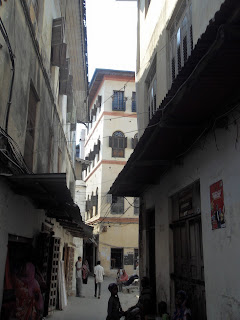

We had our closing dinner at the nearby Twiga Hotel - with an ocean view - on Thursday evening. We celebrated our workshop with jokes and reminiscences of our three weeks together, at Kunduchi and on the road. We thanked our partner institution, UDSM Gender Centre, and our sponsor, the APSA, and praised one another for the earnest participation from all sides. We agreed that we would like to stay in touch all around in the future given our common interests and opportunities for collaboration.














































